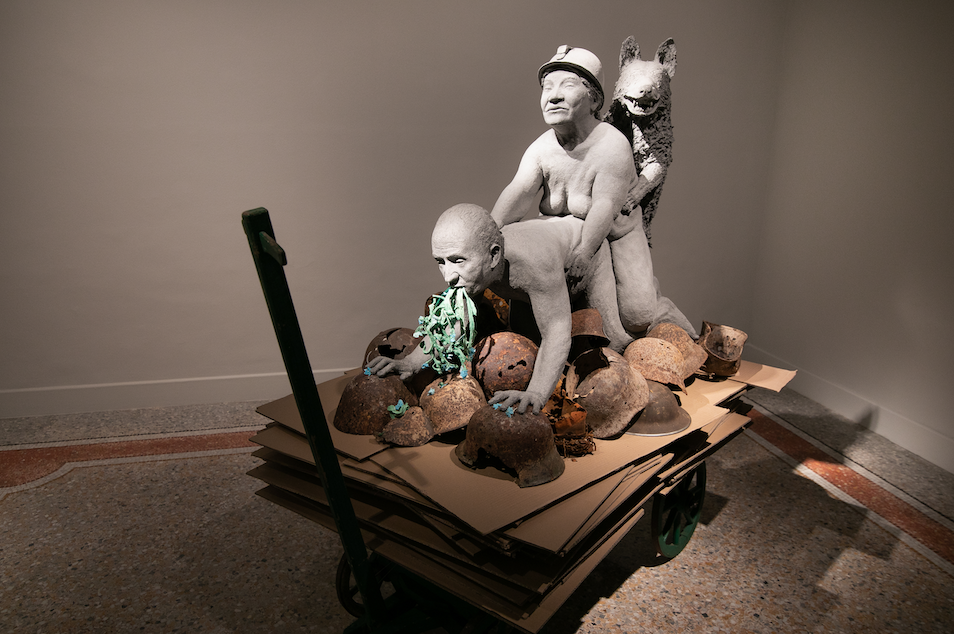reports
From censorship to the museum
The Museum of Prohibited Art, inaugurated in Barcelona's Casa Garriga Nogués in October, is the first in the world dedicated to exhibiting works that have been censored, banned or withdrawn from exhibitions.

The 2018 edition of ARCO, Madrid's International Contemporary Art Fair, was particularly scandalous. The organization decided to censor "to avoid controversy", according to the official statement that was released, the work Political prisoners in contemporary Spain, by Santiago Sierra, a series of 24 black and white photographs in which faces appear pixelated images of those imprisoned for various political reasons: from Jordi Cuixart or Oriol Junqueras to Madrid puppeteers or 15-M activists. Just before the work was removed from the stand of the Helga de Alvear gallery at the behest of the fair's organization, the journalist and businessman from Lleida Tatxo Benet acquired it for 80,000 euros and made it available to any museum or art center that wanted to exhibit it. After going around different spaces, Political Prisoners in Contemporary Spain can currently be seen in the permanent exhibition rooms of the Museu de Lleida, the first institution that opened its doors a year ago.
This piece, which puts the finger on the sore of Spanish justice, became the germ of a unique collection. Since then, Benet has compiled a set of more than two hundred works that have suffered some form of censorship, cancellation or attack, including paintings, sculptures, installations, audiovisuals, engravings and photographs of renowned creators from the 18th century to the present day. "This is a controversial collection - argues the collector in the museum catalog masterfully edited by Jorge Carrión -, made up of works that have generated a lot of controversy [...] Each of the works in the collection has a story behind it. And there are all kinds: dramatic, ridiculous, embarrassing.” They are creations by Goya, Picasso, Klimt, Barceló, Tàpies, Fontcuberta... A constellation of artists who have been victims of bans, attacks, cancellations or insults because their pieces deal with taboo subjects or are satires or representations criticism Sex, religion, feminist movements and the denunciation of political and dictatorial powers are the themes that proliferate there.
With the aim of offering the possibility of seeing these creations that for various reasons were removed from public exhibition, the collector has promoted, five years after starting the collection, the Art Museum Prohibit, the first museum in the world dedicated to exhibiting projects that have been censored or banned. The new art center was inaugurated last October 24 at Casa Garriga Nogués in Barcelona. In this architectural jewel of modernist inspiration from the beginning of the 20th century by the architect Enric Sagnier i Villavecchia, a museographic proposal is unfolding, under the artistic direction of Carles Guerra, with forty pieces from the Benet collection. Highlights include Always Franco, by Eugenio Merino; X Portfolio, by Robert Mapplethorpe; Mao, by Andy Warhol; Piss Crist, by Andrés Serrano; Plusvalía, by Tania Bruguera; Idelogías Oscilatorias, by Núria Güell and Levi Orta, or Not dressed for conquering - HC04 Transport, by Ines Doujak, among others. All are documented with information relating to the attacks they received at the time, confronting the visitor with the dynamics of various censorships, but also underlining the support actions that were generated in response. The project, as explained by the director of the museum, Rosa Rodrigo, in an interview at the end of the year, has been very well received: "We have figures for a month and a half, since the opening, and the balance is quite positive 30,000 visitors have been there, we are quite happy because we have a very diverse audience. 65% are local, among whom there are many young people, a difficult sector for museums, but also a lot of European presence.” And he adds: “The key to success is that it is a unique offer, with a collection made up of interesting pieces by top contemporary artists. Many visitors come to see the collection of works beyond the fact that they have been censored.” Regarding the possibility that gathered in the same space they could be attacked again, the director acknowledges: "This is a topic we thought a lot about, but I think that when we put them all together, as in this case, the unique strength of a piece So far, we haven't had any problems or complaints."
Throughout 2024, the center wants to incorporate more pieces from the collection, which is already evaluating new acquisitions, and deploy a program of conferences and seminars around freedom of expression "that can transcend - points out Rodrigo - the plastic arts, offering a dialogue between works and analyzing specific cases".








